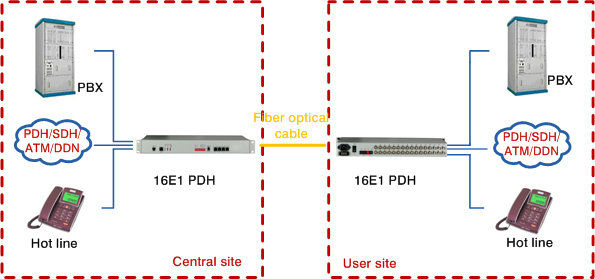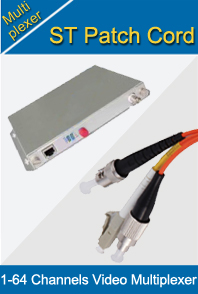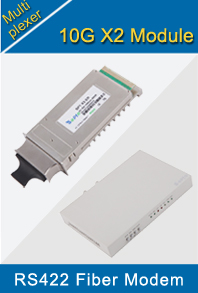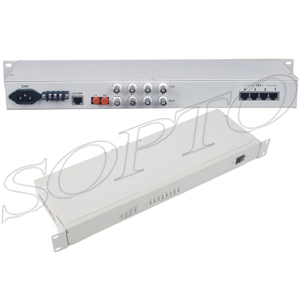-

- Sopto Home
-

- Special Topic
-

- Multiplexer Knowledge
-

- What Is a SDH Overhead?
Multiplexer Knowledge
- Why is Multiplexing Needed in Data Communication Systems?
- What is Concept of Multiplexing in Telephone System?
- What is Digital TV Frequency?
- Outlook of the WDM Networks
- DWDM Technical Overview
- CWDM Technical Overview
- How to Activate Cable Modems?
- How to Install a Fiber Optic Modem?
- How do I Choose a Best Fiber Modem?
SOPTO Special Topic
Certificate



Guarantee
Except products belongs to Bargain Shop section, all products are warranted by SOPTO only to purchasers for resale or for use in business or original equipment manufacturer, against defects in workmanship or materials under normal use (consumables, normal tear and wear excluded) for one year after date of purchase from SOPTO, unless otherwise stated...
Return Policies
Defective products will be accepted for exchange, at our discretion, within 14 days from receipt. Buyer might be requested to return the defective products to SOPTO for verification or authorized service location, as SOPTO designated, shipping costs prepaid. .....
Applications
Multiplexers can be used to connect PBX, Hot line and other devices of network from central site to user site through fiber optical cable.
SOPTO Products
- Fiber Optic Transceiver Module
- High Speed Cable
- Fiber Optical Cable
- Fiber Optical Patch Cords
- Splitter CWDM DWDM
- PON Solution
- FTTH Box ODF Closure
- PCI-E Network Card
- Network Cables
- Fiber Optical Adapter
- Fiber Optical Attenuator
- Fiber Media Converter
- PDH Multiplexers
- Protocol Converter
- Digital Video Multiplexer
- Fiber Optical Tools
- Compatible
Related Products
Performance Feature
High integration desig
Low power consumption
Good EMC, EMI
Stable and Reliable
Multiplexer Knowledge
Recommended


What Is a SDH Overhead?
SDH stands for Synchronous Digital Hierarchy. SDH is the international standard for sending synchronous data transmissions over a fiber optic cable network that is published by the International Telecommunications Union, or ITU. It is the standardized protocol for multiplexing that is used to exchange data packets between servers and clients on a network. The data packets are combined into a single light signal transmitted by LEDs over a series of channels located on the fiber optic cable network.
SDH was developed to replace Plesiochronous Digital Hierarchy protocol that was used to transport phone calls and data packets on the same fiber optic cable. SDH eliminates data synchronization problems by using a protocol that encapsulates data packets in a layered, or heavily-multiplexed, structure with an interleaved header.
Data packets are encapsulated or framed in a unit of code that is called a Synchronous Transport Module level 1. When a data packet is sent over a fiber optic cable network it is encapsulated in the STM-1 frame, which is a standard form of code. The STM-1 frame code consists of an overhead pointers that identify the administrative units that is in the information payload or user data.
SDH Overhead
In SDH, overhead is the data that is transferred across the interface between a telecommunications system, such as a server and a client or user on a network. The overhead is data that is used to direct and control how the user information is transferred and to detect and correct errors that may be in the data packets that are being sent. The SDH overhead is located in the STM-1 frame structure, which consists of 270 columns of bytes that are separated into 9 rows of bytes.
SDH Overhead Sections
The SMT-1 frame used in SDH consists of three sections, the payload that contains the transmitted data, the regenerator overhead that is the section overhead that contains information for operating equipment on the network, and the pointer that locates the beginning of the data in the payload frame. The regenerator section overhead consists of 9 columns and takes up the first three rows of bytes. The fourth row of bytes is the AU pointer and the fifth through ninth rows of bytes are the mutliplex section overhead. The other 261 columns of bytes contain the data payload of the frame.
Regenerator Overhead Sections
The regenerator section of SDH overhead is a part of the physical path or channel that the STM-1 data packet is transmitted over. It is located between a terminal multiplexer, called a SDH cross-connect and the adjacent regenerator. The regenerator section overhead supervises the sections of a network that exist on a fiber optic cable network. Regenerator section overhead is composed of 10 bytes that are separated into different functions or sections of data code.
Multiplex Section Overhead
Multiplexing is when numerous data packets are sent over a single signal on a fiber optic cable. The multiplex overhead contains information that allows the data packet to be sent on the same network as other packets, typically at the same time in a continuous stream of information. Multiplex overhead is separated into different sections. For instance, sections K1 and K2 of the multiplex overhead are the automatic protection switching channel bytes; they send signals or data between multiplex data packets during two directional switching or multiplexing on a network. They also send Alarm Indication signals messages and remote defect indication conditions.
Sopto supplies high quality multiplexing products, like Phone Optical Multiplexer, 1+1 PDH Multiplexer and 1-64 Channels Video Multiplexer and so on. For the newest quotes, please contact a Sopto representative by calling 86-755-36946668, or by sending an email to info@sopto.com. For more info, please browse our website.





